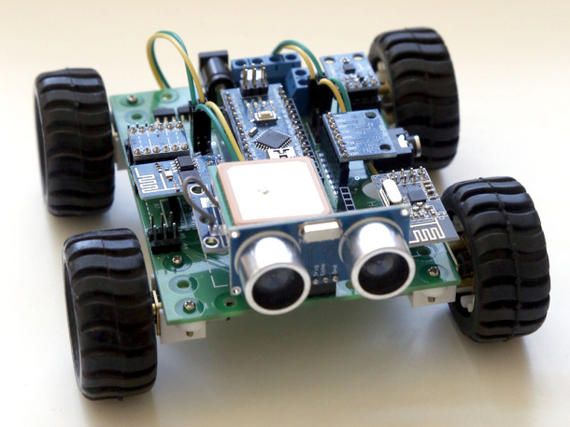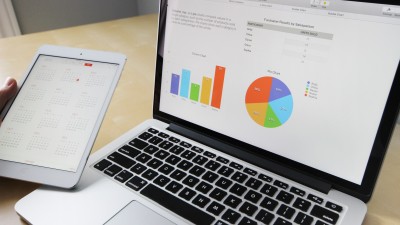JOIN THE COURSE
The hands-on course is designed for students wanting to learn the basic elements of utilizing C++ programming language to import code into the Arduino Circuit Board to see what the programs can do. The students will learn to hook wires, lights, servomotors, and speakers to the Arduino to utilize this microcontroller. In this course, students will learn how to create code for the Arduino IDE and how to set up the board to see what the code results in. This includes learning the basics such as the Arduino language, which is a simplified version of C++, what the components on the Arduino are, and how to implement basic functions and ideas on the Arduino. This is an excellent introductory course to programming if you are planning to become an electrical engineer or a programmer– one of the hottest career fields today.
Learning Objectives
Upon successful completion of this course, students will be able to:
- Start and Exit Arduino IDE
- Program in C+ using Arduino IDE
- Understand how circuits work
- Create, save and upload code into Arduino (microcontroller)
- Understand Arduino Syntax
- implement the code and understand what’s happening on the Arduino
- Set up the Arduino board for multiple projects
- Understand how Arduino interacts with many different devices
- Understand how to develop software to control the hardware.
- Utilize and understand the difference between input and output devices
- Learn the possibilities of what the Arduino can do
- Become familiar with working with both hardware and software
Course Prerequisite
- Computer Basic Skills.
- An Arduino for Beginner Kit (https://amzn.to/3ek0U4N) or equivalent.
Course Outline
- Installation of Arduino IDE
- What is Arduino?
- What can it do?
- Basic Fundamental Electronics
- Electricity
- Voltage and Ohm’s Law
- Circuits
- Understanding Basic Arduino Functions and Arduino Code
- Connecting LED lights onto Arduino Board
- Positive/Negative Lead
- Blink LED light
- Potentiometer and I/O Binary Code
- Making sounds/songs with the speaker
- Servomotor
- Final Hands-on Project
Assumption
The student is familiar with basic computer usage and is committed to working independently in their own time on a project assigned to them.
Modes of Learning
Live Online Interactive Training Sessions
Students will attend online classes conducted by a panel of our expert teachers and will have the opportunity to interact live with the instructor. Students will meet the instructor live online at a scheduled time once a week for 8 weeks. They have the option to signup for a group or private lesson.
Group Lesson: We maintain a 1:5 teacher-to-student ratio ensuring every student gets individual attention.
Private Lesson: For an additional fee, the student can signup for a one-on-one private online lesson.
We pride ourselves on paying attention to every detail and intellectual need of the students and ensuring that the student’s training needs are met and the knowledge about the subject is delivered efficiently. Students will be assigned an account to access the courseware and instructor (via email) for a period of 12 months so they can also continue to study on their own, work on assigned projects and prepare for the final assessment even after the live online course is over.
After successful submission of the project work and passing assessments, a “Certificate of Completion” will be awarded by NRCLC validating the skill set acquired during the course. It is mandatory to pass all the assessments with at least 70% to obtain a “Certification of Completion”.
Modules
The course consists of 8 modules. The workload of each module varies and consists of a combination of the following:
Lecture: The Lecture consists of notes that can be used by students as reference material. Each module consists of at least one online lecture note with examples applicable to real-life scenarios. To keep the students up-to-date with the latest information, the lecture notes may consist of hyperlinks to current resources, such as an article, a book, or a website.
Hands-on Activity: The hands-on activities help students apply the concepts learned during the lecture. Each module consists of programming activities and exercises.
Quiz: The quiz allows the student to further validate their learning. Students get unlimited attempts to pass the quiz with a minimum score of 70%.
Mini-Project: Projects help students apply the concepts learned through the lecture and apply them to build an application. All the mini projects are to be submitted via email before the end of the course.
Module Completion: To complete each module, the student must follow the instructions listed in the lecture notes.
Final Exam: At the end of the course, the student can take the final exam. The student must score 70% or more to receive a certificate of completion.
Technical Requirements
A computer with Internet access.
Career Pathways
This is an excellent introductory course for students wanting to learn to work with programmable devices. This course is also good for students preparing for the Computer Science, Information Technology Specialist Certification Exam, and/or planning to develop a career in Software Engineering.
JOIN THE COURSE




